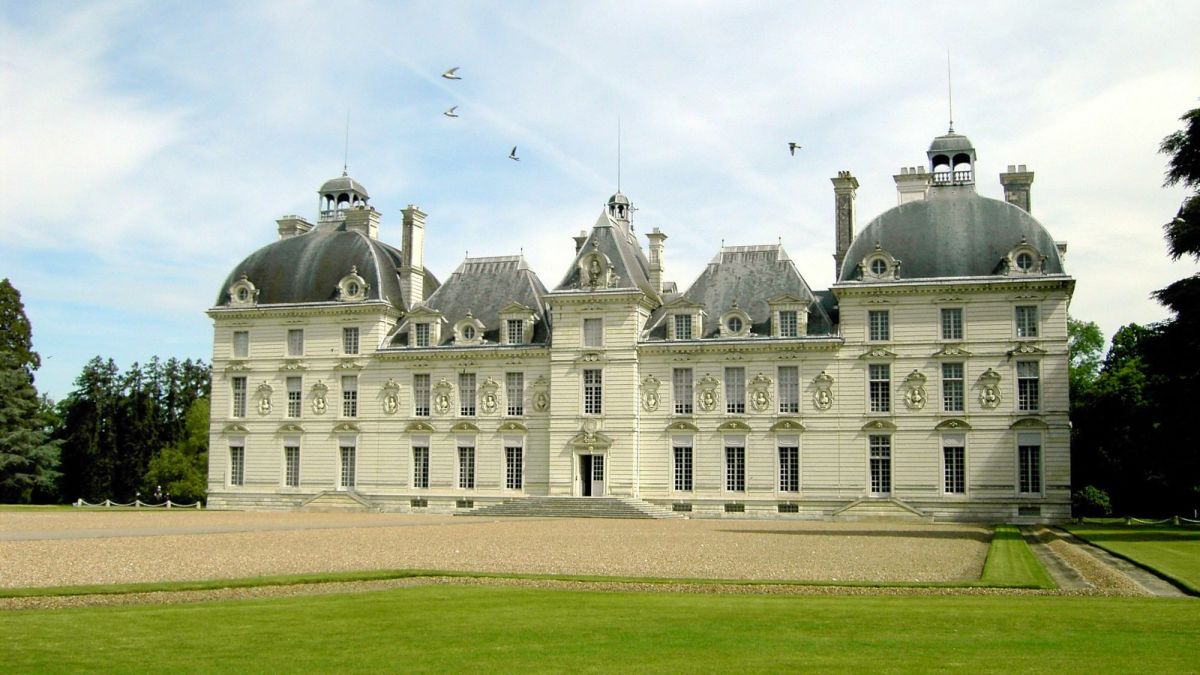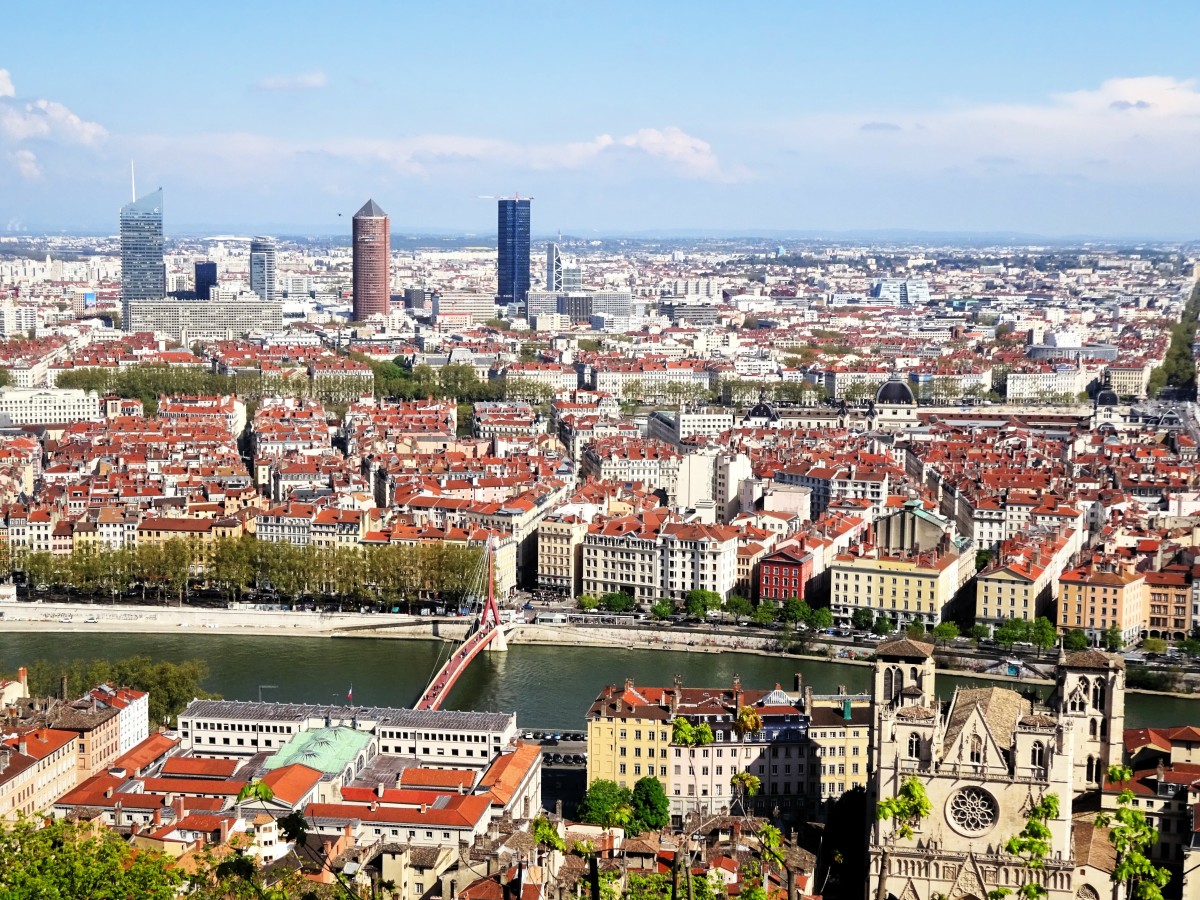Visiting Marchipont, France: Picturesque Village Liberated for France — Though Not Always French — by Canadians in 1918
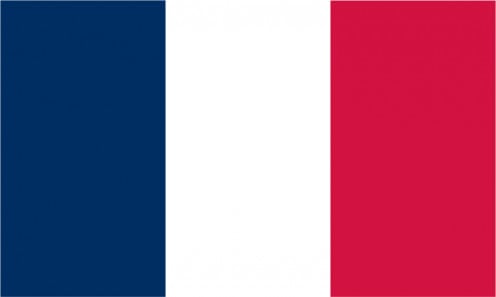

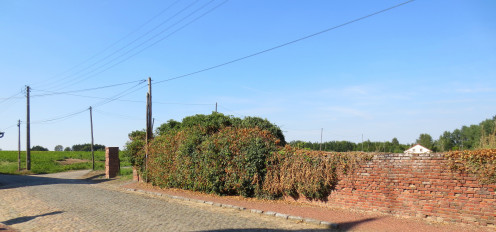

The end of the road, to where...?
[This visit occurred a number of years ago.]
In Belgium, red brick has for centuries been a very popular building material. In northern France, also, one sees a lot of red brickwork, some of it hundreds of years old.
In the French village of Marchipont (1), there is a lot of red brick to be seen. Some of the brick walls are so old that they seem as if they are about to crumble. The Église de Saint-Nicolas, dating from 1718, as well as displaying Neo-Romanesque stone arch features, is substantially made of red brick and interestingly a previous building dating from the Middle Ages was a staging post for pilgrims on the way to Santiago de Compostela, Spain.
While — so to speak — pilgrims marched through the village in the Middle Ages, so have armies. Marchipont and many localities in the region were devastated in various wars through the centuries.
One army which marched through Marchipont was a Canadian division of the Allied armies; indeed, Canadian troops liberated Marchipont on November 6, 1918 (2). (Indeed, at Quiévrain — within walking distance of Marchipont — Captain John MacGregor, VC, won a second Military Cross for capturing local bridges.)
So there is a sense in which local people will always rightly be most grateful to Canadians for having liberated Marchipont for France.
Well, yes, indeed, in a manner of speaking.
Except that for centuries Marchipont was not in France.
In fact, when the village's arguably most memorable sight — the Église de Saint-Nicolas — was built in 1718, now an example of a fine brick ecclesiastical structure in Northern France, the village was not in France at all.
Only in 1806 did the village become French.
So, was Marchipont really in Belgium after all, for centuries? seeing as the border with Belgium is adjacent to the village (see second photo, above, with Belgian red and yellow signage).
Well. not really, because Belgium as a separate country did not exist prior to 1830 (3).
So imagine Medieval pilgrims and then in successive centuries soldiers — yes, even Canadian soldiers — all marching through Marchipont — perhaps sometimes seeing some of the same, familiar red brickwork, some of it hundreds of years old. Imagine them marching earnestly somewhere, through the village, apparently sure of their purpose and destination.
Marching where? one might ask.
Rather like a Katherine Mansfield short story: all apparently full of purpose and vivacity, with strong sense of the abstract but informed by a latent sense of place...and suddenly it ends, raising questions that remain unanswered (4).
April 14, 2020
Notes
(1) The village of Marchipont, France, forms part of the municipality of Rombies-et-Marchipont, in the Valenciennes arrondissement of the Nord department.
(2) See also (in French) : https://www.canadainternational.gc.ca/belgium-belgique/bilateral_relations_bilaterales/route1918.aspx?lang=fra ; (in English: ) https://www.canadainternational.gc.ca/belgium-belgique/bilateral_relations_bilaterales/route1918.aspx?lang=eng
(3) Belgium became independent from The Netherlands in 1830/31; previously — with the interlude of the French Revolutionary and Napoleonic era — much of what later became Belgium was the Austrian Netherlands, and previously the Spanish Netherlands.
(4) Katherine Mansfield (1888-1923) lived in another border community in France, within walking distance of Italy, at Garavan, in Menton (formerly part of Monaco), which had become part of France only 27 years prior to the writer's birth; the villa at this border suburb where Katherine Mansfield lived hosts annually a New Zealand Arts Foundation Te Tumu Toi -sponsored fellowship for writers from her native New Zealand.
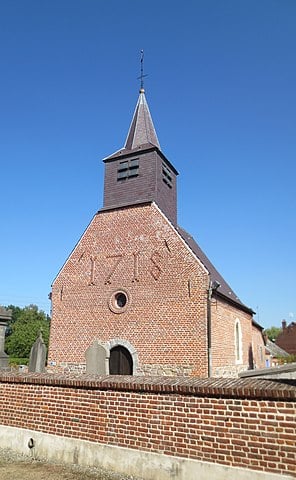
Also worth seeing
At Blanc-Misseron, Quiévrechain, Sacré-Cœur church was completed in 1894. Former mine workings at Quiévrechain have been extensively grassed over into attractive parkland.
Valenciennes (distance: 13 kilometres); sights include its City Hall with an ornate, 19th century frontage; the 16th century Maison espagnole; the Saint-Cordon Basilica, the Beaux-Arts museum; and many others.
...
How to get there: Brussels Airlines flies from New York to Brussels Airport (Brussel Nationaal / Bruxelles-National; distance to Marchipont, France: 97.2 kilometres) from where car rental is available. The Belgian railroad company SNCB / NMBS maintains a service between Brussels and the Belgian border town of Quiévrain (distance to Marchipont, France: 8.2 kilometres). Please check with the airline or your travel agent for up to date information. Please note that some facilities may be withdrawn, without notice. You are advised to refer to appropriate consular sources for any special border crossing arrangements which may apply to citizens of certain nationalities.
MJFenn is an independent travel writer based in Ontario, Canada
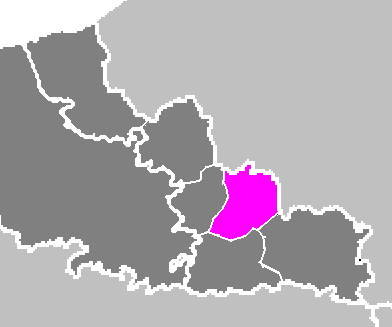
Other of my hubpages may also be of interest
- Visiting Valenciennes, France and its remarkable City Hall: an unforgettable, ornate frontage
Some of France's town halls have amazing architecture and the fine frontage of Valencienne's Hôtel de ville is especially striking. - Visiting the Spanish House, Valenciennes, France: remembering the Habsburg era at a house dating fro
The name of this lovingly restored 16th century house - the so called Spanish House - in Valenciennes is a reminder that northern France's border with what is now Belgium is relatively recent.


